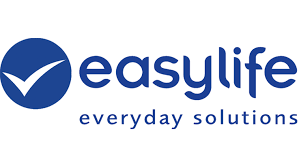The Court of Appeal has issued judgment in two appeals concerning similar marks: easyGroup v Easy Live and easyGroup v easyfundraising. In both cases, easyGroup relied on registrations it had acquired from a third party for the mark easylife, as well as other easy registrations. Here we consider key takeaways from the decisions.
Genuine use of variants
Trade mark registrations must be used to be retained. If a registration is not put to genuine use for a continuous period of five years in the UK on the goods/services in question, it can be revoked for those goods/services for which use is not shown.
However, the mark does not have to be used in exactly the form it was registered (although this is always preferable). Use of variant marks counts as long as the changes do not alter the distinctive character of the mark as registered.
The question in the two easyGroup cases was whether the use of the marks on the right in table 1 below constituted genuine use of the registration on the left. Put differently, do the changes seen in the marks on the right alter the distinctive character of the mark on the left?
Two different High Court judges had come to different views on the issue, despite one judge seeing the other's ruling. We had predicted that use of the variants on the right would be sufficient to constitute use of the registration on the left: here. The Court of Appeal has now agreed.
The decision confirms that there is reasonable tolerance for changes to logo elements of marks (less so for word elements). Nonetheless, this case must be at the outer edges of what is acceptable, and brand owners should always consider re-filing when they update their marks. Making sure that the business is aware of the risks of making changes to marks is also key.
An additional argument for genuine use?
The Court of Appeal in the easyGroup cases also commented that marks one to three on the right in table 1 below can be seen as two separate marks being used together: the tickball at the front as one mark and the word easylife plus strapline as the second mark. When seen as two separate marks, the comparison for the purposes of assessing whether there is genuine use becomes that set out in table 2 below. If this comparison is used, it is much easier to see that the changes on the right do not alter the distinctive character of the mark on the left.
This is an underused argument in proof of use that we might now see deployed more often. Brand owners should always consider whether they can argue that they are actually using two marks instead of one if it helps to prove genuine use through a variant. While the EUIPO/CJEU often seem reluctant to see two marks as being used together, the easyGroup decisions confirm that the same is not true in the UK.
Broad or narrow specification?
The Supreme Court decision in SkyKick tells us to think a little before filing for broad categories and lists of goods/services lest we invite bad faith counterattacks. In particular, if a broad category includes distinct sub-categories for which there is no genuine intention to use the mark, there will be bad faith.
The easyGroup Court of Appeal decisions remind us that going broad has (obvious) benefits and that brand owners won't always get cut back significantly even if they have only used the mark on a narrow range of goods/services. One of the easyGroup marks was registered for advertising/promotion services but had only been used for the provision of advertising by placing inserts into published catalogues. Nonetheless, that use was sufficient to retain a specification for the sub-category of "providing advertising or promotional space in printed publications" - quite broad.
For certain goods/services, especially advertising and retail services, the sub-categories are drawn broadly. It means that the specification tends to end up being quite broad, even where use is arguably quite narrow (as in the easyGroup cases). That is something brand owners and practitioners should bear in mind when trying to get the balance right between avoiding bad faith allegations and retaining broad categories.
No change to appeals?
Lastly, the Court of Appeal overturned the Easy Live first instance decision and held that the use of EASY LIVE (for auctions) infringed easyGroup's easylife mark (on the left below), registered for the bringing together of various goods for a general merchandise store.
The message to the Court of Appeal from the Supreme Court in Iconix v Dream Pairs - that the bar for overturning a first instance decision is high – might not have been received! To be fair, the first instance non-infringement ruling in the Easy Live case did feel more like what the judge wanted to find rather than what he should have found, so it's not completely surprising that it was overturned. Watch this space to see if it's business as usual for the Court of Appeal in its approach… or not….
Table 1: the mark as registered and the "variants" used
| The registered mark |
Sign used |
 |
1 |
 |
| 2 |
 |
| 3 |
 |
| 4 |
EASYLIFE LIFESTYLE SOLUTIONS |
| 5 |
EASYLIFE |
Table 2: the comparison if the marks on the right consist of two marks
| The registered mark |
Sign used |
 |
1 |
 |
| 2 |
 |
| 3 |
 |











